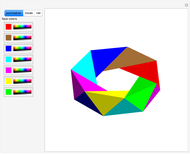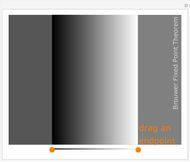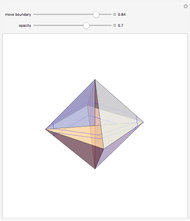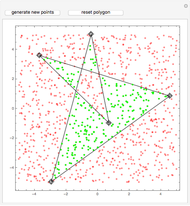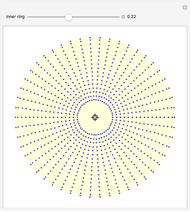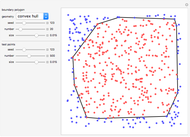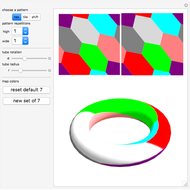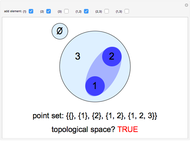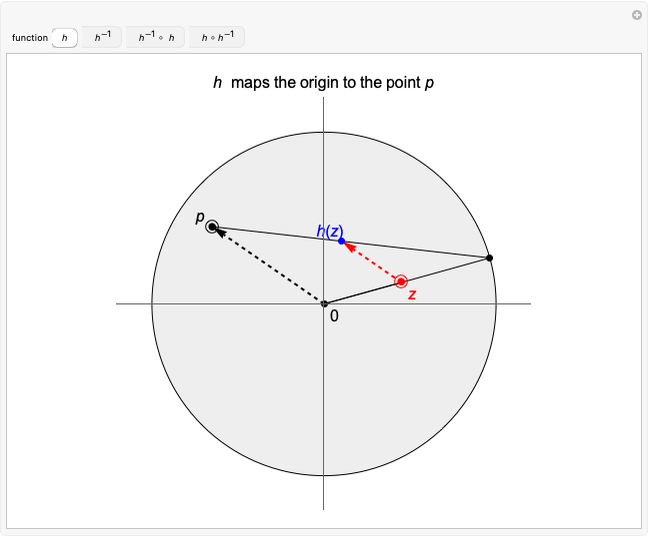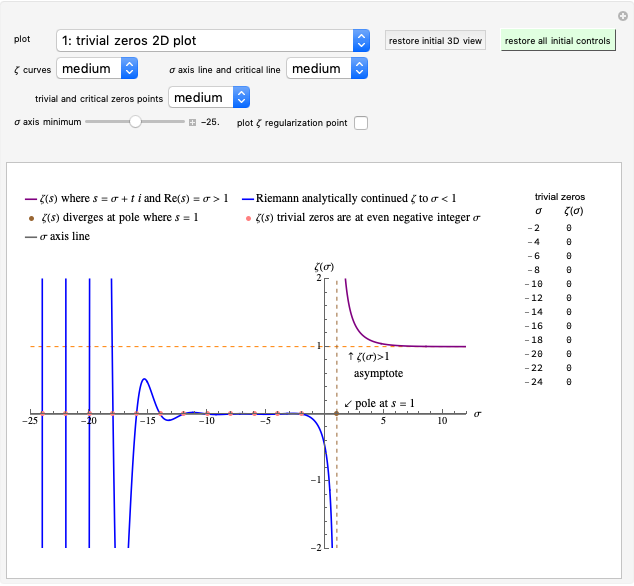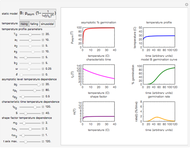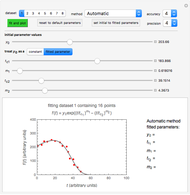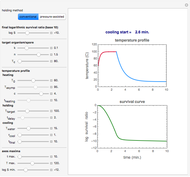Homeomorphism of a Disk Mapping the Origin to Another Interior Point

Requires a Wolfram Notebook System
Interact on desktop, mobile and cloud with the free Wolfram Player or other Wolfram Language products.
This Demonstration shows the action of a homeomorphism  of the closed unit disk
of the closed unit disk  in the plane that maps the origin 0 to a selected point
in the plane that maps the origin 0 to a selected point  in the open unit disk
in the open unit disk  , while keeping each point on the boundary of
, while keeping each point on the boundary of  fixed. It also shows the action of the inverse
fixed. It also shows the action of the inverse  of
of  as well as of the compositions
as well as of the compositions  and
and  .
.
Contributed by: Murray Eisenberg (June 13)
With additional contributions by: Mark D. Normand
Open content licensed under CC BY-NC-SA
Details
Snapshot 1: image under the homeomorphism  of another point
of another point  in the open disk for the same point
in the open disk for the same point  seen in the Thumbnail image
seen in the Thumbnail image
Snapshot 2: image under  of a point
of a point  in the open disk but for a different given point
in the open disk but for a different given point 
Snapshot 3: image under  of the origin is the given point
of the origin is the given point 
Snapshot 4: image under  of a point
of a point  on the bounding circle is the same as
on the bounding circle is the same as 
Snapshot 5: image under the inverse homeomorphism  of a point
of a point  in the open disk for a given point
in the open disk for a given point 
Snapshot 6: image under  of another point
of another point  in the open disk for the same point
in the open disk for the same point 
Snapshot 7: image under  of a point
of a point  in the open disk but for a different point
in the open disk but for a different point 
Snapshot 8: image under  of the given point
of the given point  is the origin
is the origin
Snapshot 9: image under  of a point
of a point  on the bounding circle is the same as
on the bounding circle is the same as 
References
[1] Mathematics Stack Exchange. "Conformal Automorphism of Unit Disk That Interchanges Two Given Points." (Mar 4, 2022). math.stackexchange.com/a/3093167.
[2] J. M. Lee, Introduction to Topological Manifolds, 2nd ed., New York: Springer, 2011.
[3] Mathematics Stack Exchange. "A Homeomorphism of  Fixing the Boundary?" (Mar 4, 2022). math.stackexchange.com/a/1517119.
Fixing the Boundary?" (Mar 4, 2022). math.stackexchange.com/a/1517119.
[4] Mathematics Stack Exchange. "  Is a Strongly Locally Homogeneous Space." (Mar 4, 2022). math.stackexchange.com/a/4066088.
Is a Strongly Locally Homogeneous Space." (Mar 4, 2022). math.stackexchange.com/a/4066088.
[5] M. Eisenberg, Topology, New York: Holt, Rinehart and Winston, 1974.
[6] E. W. Weisstein. "Homeomorphism" from MathWorld—A Wolfram Web Resource. mathworld.wolfram.com/Homeomorphism.html (Wolfram MathWorld).
[7] E. W. Weisstein. "Disk" from MathWorld—A Wolfram Web Resource. mathworld.wolfram.com/Disk.html (Wolfram MathWorld).
[8] E. W. Weisstein. "Linear Fractional Transformation" from MathWorld—A Wolfram Web Resource. mathworld.wolfram.com/LinearFractionalTransformation.html (Wolfram MathWorld).
Snapshots
Permanent Citation














































